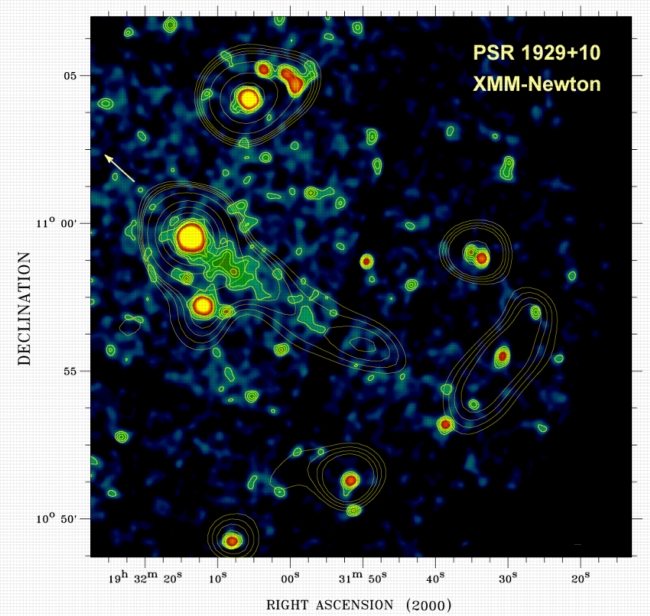
 Credit:W.Becker/Max-Planck Institut für extraterrestrische Physik; ESA
Credit:W.Becker/Max-Planck Institut für extraterrestrische Physik; ESA
Shrapnel
Supernovae produce stellar shards ballistically flying through space at enormous speeds. But what about the stellar core that gets left behind by the explosion? In an explosion that's spherically symmetric, the explosive force on the stellar core would be equal in all directions, resulting in no net movement. A strange idea, to be sure. Small deviations from perfect spherical symmetry would result in an unbalanced force and a net acceleration - but in which direction? Astronomers study remnant stellar cores called neutron stars hoping to divine these deviations by determining the direction and speed of the neutron star's motion through space. One way to do this is illustrated in the X-ray image above, obtained by the XMM-Newton X-ray Observatory of the neutron star PSR1929+10. The neutron star, the bright object in the middle of the left side of the image, is moving in the direction of the arrow. The motion of the neutron star through space produces a contrail of shocked, X-ray producing gas, which is clearly seen trailing the star. But the mystery still remains: what determines the ultimate direction of motion? Magnetic fields? Spin? What?
<
HEA Dictionary ● Archive
● Search HEAPOW
● Other Languages
● HEAPOW on Facebook
● Download all Images
● Education ● HEAD
>
Each week the HEASARC
brings you new, exciting and beautiful images from X-ray and Gamma ray
astronomy. Check back each week and be sure to check out the HEAPOW archive!
Page Author: Dr. Michael F. Corcoran
Last modified Monday, 26-Feb-2024 17:23:10 EST


